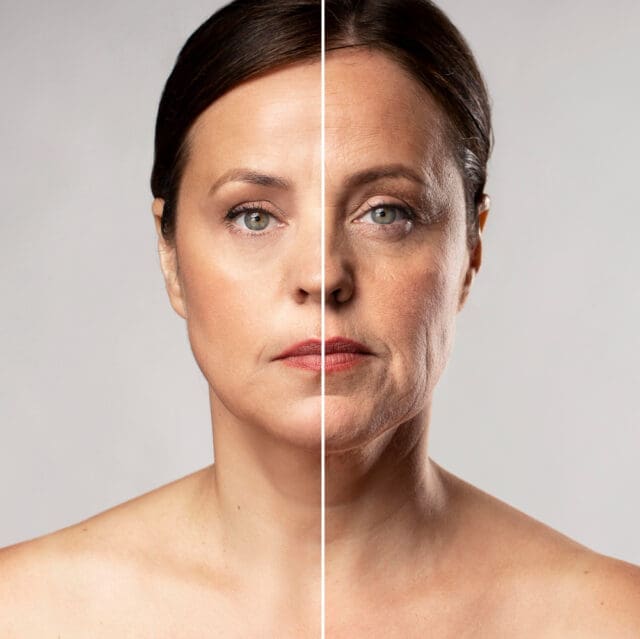A facelift can improve sagging jowls, deep nasolabial folds, and excess skin in the neck and jaw area. It can also tighten the underlying muscles and improve the overall tone of the face.
A successful outcome depends largely on the patient’s willingness to follow our pre- and post-surgical instructions. This includes maintaining a stable weight and avoiding smoking and alcohol use.
Age
A facelift is an invasive surgery that typically requires time off from work. Most patients experience soreness, swelling, and bruising for a week or two. This is a normal part of the healing process and can be minimized by following your surgeon’s pre-surgical and post-surgical instructions to the letter. You will need to arrange for someone to drive you to and from your surgery and to help care for you during the initial recovery period.
Your age is a factor in whether or not you are a candidate for facelift surgery, but it should not be the only factor. As you age, your skin loses its natural flexibility and suppleness. The result can be loose, sagging, wrinkled skin around the neck and jawline. Facelift surgery can remove excess skin and redefine your neck and jawline, reducing the appearance of jowls.
The best candidates for facelift surgery will have facial skin that retains significant elasticity and flexibility. You should also be in good general health, as any surgical procedure will require a certain level of healthy lifestyle practices to ensure proper healing and recovery. This includes not smoking, limiting alcohol consumption and practicing healthy eating habits. These factors will help you maintain a youthful look as you age.
Physical Condition
During the initial consultation, your surgeon will evaluate your face and neck to determine where incisions can be concealed. Your facial plastic surgeon will also consider your hairline and bone structure to help preserve or restore your original face shape. Men’s faces tend to have more pronounced skeletal and ligament structures, requiring more surgical manipulation during a facelift than women’s.
The ideal facelift candidate is a healthy non-smoker with face and neck skin that has retained some flexibility and elasticity. It is important to tell your surgeon about any underlying health problems or conditions, including high blood pressure, bleeding disorders, or the tendency to form excessive scars. It’s also helpful to disclose any medications you have taken or have taken recently, as these can affect your candidacy for a facelift.
A facelift is typically performed on an outpatient basis in a surgeon’s office-based surgical suite or a hospital or surgery center. You will receive either local or general anesthesia or intravenous sedation. Throughout the procedure, your medical team will monitor you to ensure you are alert, breathing normally, and your vital signs remain stable.
After the procedure, you’ll return home with your care team to begin recovery. This will include taking pain medication and keeping your head elevated to reduce swelling. Follow the instructions provided by your surgeon to help speed healing.
Lifestyle
A facelift can reduce jowls, necklines, and excess neck and lower jaw fat. It also repositions sagging muscles in the face and reduces wrinkles and folds. This cosmetic procedure is suitable for both men and women in their 40s, 50s, or older who want to improve the appearance of sagging facial skin and fat deposits.
A good candidate for a facelift has a healthy lifestyle and is committed to following post-surgical instructions. They are non-smokers and generally have good health habits that help with the healing process. This is important for ensuring that the scars heal as inconspicuously as possible.
Candidates must be willing to undergo surgery under sedation or general anesthesia and will likely need to take several days off work to allow the wounds to heal. They should also avoid contact sports or saunas and sleep on their back with their head propped up on pillows (unless their doctor has advised otherwise).
Facelift results can vary from patient to patient. Still, a successful outcome depends on whether the patient has good skin elasticity and is willing to stick to a healthy lifestyle to help them maintain their new look. Patients with rapid weight gain or loss before or after a facelift may want to delay the operation until they are stable. This will ensure that their new facelift looks natural rather than distorted by a change in the shape of their face.
Personal Expectations
As with any surgery, you must have realistic expectations about the results of a facelift. This is because it is a highly individualized procedure. You must seek a natural-looking result that complements your underlying bone structure and facial features. For example, genioplasty may be better than a facelift if you have a weak chin or jowls.
At the initial consultation, you will describe your goals for the surgery. This lets the surgeon advise you on what can be accomplished with the facelift and other procedures to help you meet your goals. He will use computer imaging to show you how you could look with the desired changes, and he will take photographs of your face to get an accurate idea of your current facial shape and proportions.
A good candidate will also be willing to commit to the recovery process. Following a facelift, you must rearrange your schedule for the necessary time to rest and recover. In addition, you should be prepared for some pain and discomfort.
It is important to arrange for someone to drive you to and from the procedure and to stay with you afterward. You will feel the effects of the anesthesia and prescription pain medication during this first night at home, and it will be safer if you have a friend or family member available to help you.
Featured Image by https://www.freepik.com




